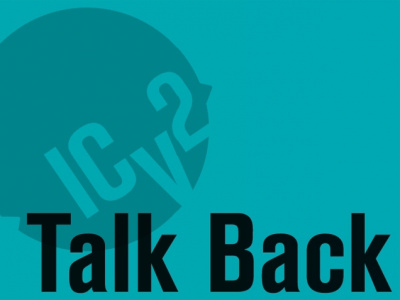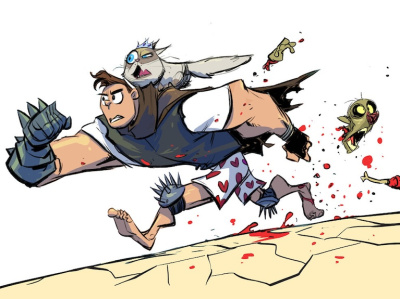
I Think I Can Manage is a weekly column by retailer Steven Bates, who runs Bookery Fantasy, a million dollar retail operation in Fairborn, Ohio. This week, Bates looks at the key ordering tool for direct market comic retailers and asks for a different way of accessing the information.
As the deadline approaches for completion of the latest Diamond Previews order, I brace myself for the task of plowing through the solicitations, filtering out the hits from the hype, and making intelligent guesses on what's going to sell two and three months down the road. Gathering up cycle sheet and monthly order reports generated by my subscription database, a stack of customer Previews, and handwritten special orders, I dive in each month, thinking each time that this will be the month I actually get the numbers right.
One of the problems I encounter with Previews is the overabundance of advertising and the use of ad copy as solicitation information. I believe it was Brian Hibbs, in a Comics Retailer column, who said he starts each order by tearing out the full-color ads inserted by major publishers. Most, if not all, of those pages duplicate a separate entry by the publisher each month, often in a different sequence from the material listed in Diamond's POW (Previews On Windows) and on-line orders, earning them the distinction of being both confusing and annoying.
As a 'magalog' (that hybrid paper equivalent of an 'infomercial') Previews works pretty well, with hundreds of product descriptions, tons of pretty pictures, and even some interviews provided by top creators. Sure, it's not Wizard, but who needs another Wizard? But as a sales tool and catalog, I struggle with the format of Previews. Some of this can be blamed on Diamond, but not all. Publishers like DC, Marvel, Image, and Dark Horse seemingly dictate the format and content of their own sections, to the point that Marvel now offers a separate catalog (called, oddly enough, Marvel Previews). As Premier (exclusive) Publishers, the four companies mentioned above are merely represented by Diamond, which acts as a 'Sales Agent.' Their placement in the front of each Previews dominates prime catalog real estate and, I would imagine, the orders of most comics retailers. I know I've spent more than 2/3 of my monthly comic budget by the time I get to Previews' regular comics section -- 'the ghetto' -- and then must decide who gets my scraps.
The Big Guns aren't the only ones with cluttered and confusing sections. Mid-sized publishers like Devil's Due, ADV Films, Avatar, IDW, TokyoPop, and Viz all fill up their pages with lots of big pretty pictures and pithy product descriptions which read like political sound bites, all spin and no substance. Some companies have pursued this course of action and ultimately failed, including CrossGen and Dreamwave. These full-color, full-page, full-power ads can't be cheap, and I'm sure Diamond needs that ad revenue to keep the price of Previews down to a mere $4.50. But I don't need it.
Several years ago, when Richard Hernandez was the Midwest Marvel rep (before Toy Biz and Perelman and Icahn mucked up the company), one of his tasks was to determine what made a good catalog. Marvel was distributed by Heroes' World at the time, if memory serves, and Rich wanted the catalog to be more efficient than the material Diamond and Capital City's Advance Comics incorporated. What I sent him was geared mostly toward Marvel solicitations, but the principles remain the same. I called the system T.A.P.S., which stood for Title-Author-Price-Story.
The first and most important information I need when placing an order is the Title. Obviously, the name of the book reveals most of the pertinent information about it: who's in it, what it's about, whether it's an existing series or a new offering, and wheter it 'sings' to me. For example, even if Marvel has rebooted the guy umpteen times, if I see the title Captain America, I immediately know that the book has a history behind it, a built-in fan base, and name recognition. I can probably assume a certain level of quality, but most importantly, I can see a track record of sales by looking over my own sales history. On the flip side, if a publisher announces Captain Poughkeepsie, I can make certain assumptions about that, as well, just based on its title. Included in the title should be the issue number; with so many one-shots, reprints, and relaunches, the issue number tells as much information as the title, in some cases. Going back to Captain America, for example, a designation of Volume 3, No. 1 means much more to me than Captain Poughkeepsie's #1. On the other extreme, Detective Comics #804 is a safer bet than Jumbo Girls of Jacksonville #3.
Author refers to the creator(s) of the book, which includes not only the writer and artists, but the publisher as well. A DC book by Geoff Johns and Jim Lee would have immense sales potential, but a DC offering from Jerry Noname and Joe Newcomer has less. Likewise, the Geoff Johns/Jim Lee team on Captain Poughkeepsie from Major Moneybags Publishing gives that title more weight. There are books that sell simply on the basis of the character or title -- both Marvel & DC have milked that cash cow for years, with Wolverine, Punisher, Batman, Lobo, and others in lame one-shots, miniseries, and specials. But common sense indicates that good creators with a solid track record will help sell books, so we need that information before ordering.
As comic books become more and more expensive, Price plays an even bigger role in my ordering. My customers have fixed budgets for their hobby, as do I. No matter how awesome Captain Poughkeepsie potentially is, with Geoff Johns scripts over Jim Lee pencils and an Alex Ross cover, at $5.95 I'm going to be conservative. Established characters often have trouble selling at prices higher than $3.50, so why would I risk speculating on a pricier, untested property? What could sway me to order Captain Poughkeepsie at this point?
Story. Every comic offered in Previews (or any comic distributor's catalog) should tell me its story upfront. Not the blurby, TV Guide-speak sales pitch, but a real, honest-to-Gosh description of what I and the reader can expect when the book hits the shelf. Not 'The streets of Poughkeepsie cringe in fear as crime runs rampant. Who can bring safety and comfort? Who can stop the babies and sirens from wailing? Who? WHO? Captain Poughkeepsie.' That tells me NOTHING! That's all hype and amateur self-promotion, probably written by the writer or his publisher-Mom. A good solicitation will reveal important details, the kind journalists use to write news: Who, What, Where, When, Why, and How. Who are the characters? What do they do? Where does the story occur? When does the action take place? Why do the characters do what they do, what's their motivation? And How is it presented?
Publishers don't want to reveal too much, remaining coy about major plot points. Recent super-sellers Identity Crisis and Avengers: Disassembled hinged on the mystery: who dies? Who betrays whom? Why? Readers were sucked-in by the mystery, but many retailers missed the boat, under- and over-ordering these series because of lack of information. I'm not suggesting publishers spill all the beans about upcoming titles, especially storylines driven by mystery, red herring, and last minute denouement. But we're supposed to be partners, here, with one hand washing the other. A little more of the right kind of information, and less hype, would make retailing much easier.
There are other factors my TAPS anagram don't cover, such as the format elements of color or black & white status, page count, etc. Certainly those factors should be considered as well, and incorporated into the listing somewhere. But I contend that ordering comics, especially those with a documentable history, essentially boils down to consistent patterns based on a certain parameter of criteria, not full page ads boasting a new revolution in comic book glory from the next generation of young turks with a pencil and license-to-Photoshop.







